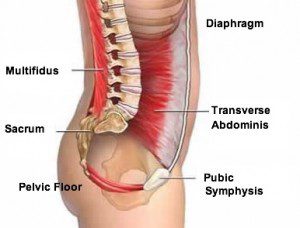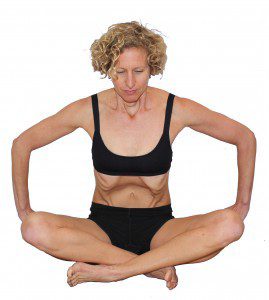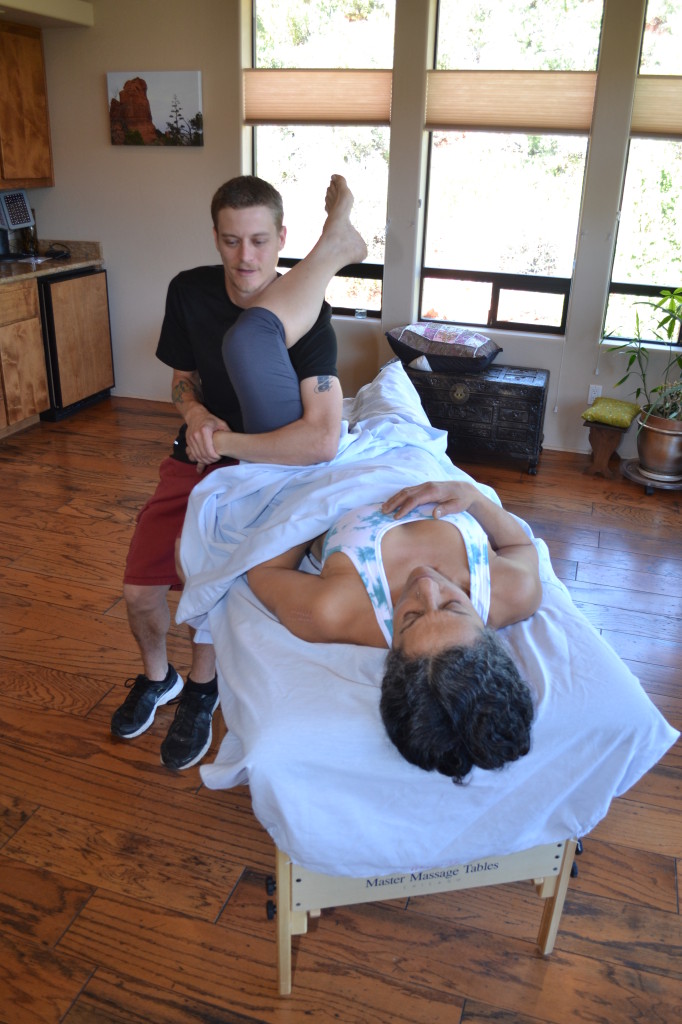By now, most everyone has heard of, or has participated in ex programs specific to building the “core”. Although an important concept, we are now discovering that how we have been building and exercising our core may actually be causing more harm than good, especially if you have a back problem, pelvic floor dysfunction like incontinence, hemorrhoids or pelvic pain, or signs of abdominal integrity problems like hernias or diastasis recti. Here, we will challenge the old standard exercise program of crunches and sit-ups or any other program that singles out the abdominals from the rest of the core and look at hypopressives vs. traditional abdominal exercise.
First, let’s define the core. Think of it like a canister with a top, bottom and cylindrical body. The top is the respiratory diaphragm that separates the chest from the abdomen. The bottom is the pelvic diaphragm on which the urogenital organs rest and is situated between your “SITS” bones (the bones you sit on), the coccyx (tailbone) and the pubic bone. The walls of the canister are the small low back muscles called the multifidi along the spine, and the deep abdominal muscle called the transversus abdominus (TrA) in the front and sides. To really use the “core” in a comprehensive and involuntary way, they all need to be exercised at the same time, not just one set at a time like abdominal crunches and then back extension exercises. This old philosophy of core strengthening never even addresses the pelvic and respiratory diaphragms. For the “core” to function as a unit for better balance and counter balance, the muscles of the core have to be trained as unit.

Think of squeezing a tube of toothpaste. If you increase the pressure in the tube, the organs of the abdomen will be pushed into the direction of least resistance. If the pelvic floor is the weak link, as is most common, one can end up with urinary or fecal leaking (incontinence), hemorrhoids, or prolapses of the bladder, rectum or uterus. If the abdominal muscles are the weak link, one can end up with abdominal or inguinal hernias or lumbar disc bulges or hernias. The force to avoid in training or exercising is increased intra-abdominal pressure which is the result of crunches and sit ups . Hypopressive exercises causes an involuntary contraction of all 4 parts of the core while decreasing the intra-abdominal pressure which trains and balances the resting tone of these parts, in turn creating better posture, improved lung function, and a toned and supportive pelvic floor.
These exercises can be performed in any position but, today, I will present how to do them in a seated position. Sit comfortably in a chair or in crossed legs, hands on your knees so you can provide pressure into the legs to help lift the rib cage. Inhale, exhale, at the end of the exhale, hold your breath and suck in as deeply as you can while pressing the hands into the knees or legs. There will be a deeper space under the rib cage. Keep the low back in neutral or a straight position, not curved or rounded toward the back. See the picture below.

If you can speak or breathe while holding this posture, you are not doing it correctly. Pictured above is Trista Zinn and you can watch her videos on youtube for a tutorial.
Here at Hands On Therapy, we can teach you how to incorporate these exercises in your fitness regimen or appropriately use them in conjunction with manual therapy to help you heal or rehab. In the next article, we will discuss the specifics of post natal abdominal care, prolapse prevention or treatment, diastasis recti and exercises to avoid if intra-abdominal pressure is too high and how they relate to hypopressive exercise theory.
Katrina Barton, PT

